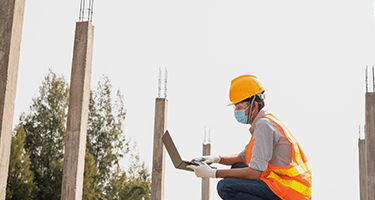Quality Control vs Quality Assurance: What Construction Companies Should Know
Any reputable company in the construction industry operates on a safety-first basis at all times. The health and safety of its employees are paramount to the company because the company is well-aware of the fact that the employees are the ones who enable the company to do what it does. They are the backbone that makes everything else possible. This makes the processes of both quality assurance and quality control essential. However, there is some confusion about what these terms mean, what the differences between the two are, and why each one is fundamental to the operation of a successful and growing business. We will cover these topics and many more right now.
Quality Control: What Is It?
Imagine a world in which there is a one-in-ten chance that the packaged food that you purchase is expired, moldy, and could make you sick if consumed. If that is the world that we live in, then no one would purchase those foods any longer. Of course, that is not the case, and people can go about buying their packaged foods with relative assurance that they are safe. This is because of the quality control processes implemented by the various food manufacturers. Those same procedures are used in the construction industry as well to ensure that:
- Every project comes out the way that the customer expects
- There is uniformity in how policies are implemented
- The construction materials are of the highest standards of quality
- The company can build a good reputation based on the quality of the work it has already performed
- There aren’t complaints from customers after the project is done
Quality control is the catch-all term for the various procedures that one implements to make sure there are not any defective materials or practices being implemented at any stage of the construction project.
The Importance Of Quality Control
It is critical to remember that while quality control is typically used to ensure uniformity at every stage of the construction project, there are some exceptions to this rule. Carnegie Mellon University points out:
While conformance to existing design decisions is the primary focus of quality control, there are exceptions to this rule. First, unforeseen circumstances, incorrect design decisions or changes desired by an owner in the facility function may require re-evaluation of design decisions during the course of construction. While these changes may be motivated by the concern for quality, they represent occasions for re-design with all the attendant objectives and constraints.
Adaptations to the construction project may be necessary at times to provide the highest level of quality throughout the entire project. Quality control does NOT mean being completely inflexible, it just means providing the highest levels of quality throughout every stage of the process. Project managers who are able to do this will likely win more business for the firm in the future, given their attention to detail and insistence on delivering excellence to their clients.
What Is Quality Assurance?
Quality assurance focuses more on the implementation of policies to ensure that safety is always at the forefront of all decision-making from the start. The aim of all QA processes is to try to bring a safer environment in which everyone can operate. It is challenging to be certain, but that is why the people who are brought in for this job are expertly trained on what needs to be done.
Juran.com gives a brief explanation of what quality assurance is:
The emphasis of quality assurance is less on the end product, and more on the processes and systems involved in creating it. For this reason, auditing is an important part of the quality assurance function–particularly quality auditing, which examines an organization’s entire quality management system (QMS).
In the construction industry, there is nothing worse than getting towards the latter stages of a project only to discover that certain processes were missed to begin with. That can lead to the derailment of the entire project, and no one wants to see that. Thus, various methods of quality assurance have been implemented to attempt to prevent this from happening.
Types Of Quality Assurance
There are different approaches to quality assurance that work. Companies often experiment with various approaches to the problem. The method that one takes at any given moment often comes down to what is likely to work best given the needs of the project at that time.
Stress Tests
Putting an element of the project to the test before it is placed into the actual project. This allows people working on the project to test for themselves how the various elements of the project may stand up when put to the test.
The idea is to put materials under some of the toughest conditions that they may face while in real-world environments, in order to see if they are strong enough to withstand what the world may throw at them. Working with materials on this scale allows for companies to test various strategies and see what works best for what they are attempting to accomplish.
Changes In Company Culture
At times, companies may consider it to be in their best interests to alter the ways in which they do business. If they can change the culture around how they use and develop the materials that will go into their projects, then they can perhaps create better outcomes. Often, it all starts with a change in mindset among the employees. It is imperative to get everyone to think about the end-user of what they are attempting to build. The more that the focus stays on those people, the better the products produced (for the most part). They say that no man is an island, and no person within a construction company should feel that their role is unimportant. They all need to believe that everything that they do serves an end purpose that is vital to the company’s success.
What Makes Both Quality Control And Quality Assurance Necessary?
Think back to a time when you were in school. Draw your mind back to the days when you were assigned a group project to work on with your classmates. Perhaps you enjoyed this kind of work, or perhaps you dreaded it. Either way, you ultimately knew that getting the project done right would take teamwork, focus, and attention to detail. You could not let yourself or your teammates wander too far off track without risking a lack of progress on the project.
Quality control and quality assurance can be thought of in that way as well. They are safeguards against letting some small aspect of a project derail the larger framework of what you are trying to accomplish.
We actually practice quality control and quality assurance in our daily lives all the time, we just don’t necessarily think of it like that. When you take a few moments to re-read over an e-mail you are about to send, or even when you stop to think about your words before making a comment to someone, you are performing a version of quality control. You don’t want to offend anyone, and you don’t want to send something embarrassing via your e-mail address, so you take a little extra time to make sure everything is perfect before giving it the green light. When this same thing is practiced on a larger scale, we call it quality control or quality assurance.
Preventing Lawsuits And Other Headaches
We should not breeze past the fact that exceptional quality control and quality assurance policies can help limit the likelihood and the damage from any potential litigation levied against the company. Companies are hit with lawsuits every day, and construction companies are frequent targets of those lawsuits. Worse yet, construction companies can be on the hook for lawsuits years after they have completed the project they were assigned to do. Thus, it can almost feel as though they have no escape from the potential for lawyers hounding them over some faulty aspect of their work.
The only way to reduce the chances of a lawsuit being thrown at them is to ensure that the quality of the work is superb from start to finish. Quality control and quality assurance steps are necessary to act as a backstop against poor quality designs and/or work getting through. They are a protective mechanism that can help construction managers rest a little easier at night.
The small amount of extra time that it takes to perform QC and QA steps is nothing compared to the potential for losses stemming from a lawsuit. It is necessary to run a cost-benefit analysis in these situations, and there is no doubt that the benefits of performing QC and QA steps far outweigh any cost of doing so.
Construction managers have enough to worry about without having to take on the added stress of potentially getting sued on top of it all. Thus, the immediate implementation of concrete steps to take for both QC and QA purposes is incredibly important at this time. Companies need to have their policies firmly established and understood throughout the company, and that training process needs to begin immediately.
About GoCanvas
GoCanvas is a mobile platform that makes it simple for any business to automate how work is done, replacing outdated processes and expensive paperwork. The GoCanvas App works on all smartphones and tablets, helping companies easily collect information across their organization, share it instantly with others and gain real-time insights on their business operations. Get started today with solutions for quality control forms, quality control inspection apps, and other workflow management tools built specifically for the construction industry.

Stay in Touch!
About GoCanvas
GoCanvas® is on a mission to simplify inspections and maximize compliance. Our intuitive platform takes care of the administrative tasks, freeing our customers to focus on what truly matters – safeguarding their people, protecting their equipment, and delivering exceptional quality to their customers.
Since 2008, thousands of companies have chosen GoCanvas as their go-to partner for seamless field operations.

Check out even more resources

The Ultimate Guide to Quality Control Inspections
Managing a construction project is a complex and stressful process. Among other things, you have to coordinate project team members, materials, and equipment and ensure that contractors are not afflicted by the potential risks and hazards present at the construction site. That said, quality means different things to different people which is why you should…

Constructions Digital Transformation
Your competition is finding faster ways to capture data and get critical insights from the field into their existing systems. In short, they’re not going bigger, they’re getting smarter. In this 15-minute broadcast on the construction industry’s digital transformation, find out why the trend is to modernize workflows – and how you can stay ahead of the curve…

See how VIP Lighting optimized efficiency with GoCanvas
VIP Lighting is a retail lighting and electrical maintenance business that services over 10,000 retail locations all over Australia and New Zealand. Before GoCanvas, VIP Lighting had two separate systems that were impossible to integrate, leading to inefficiencies. GoCanvas made it easy to integrate their systems into single, centralized platform…